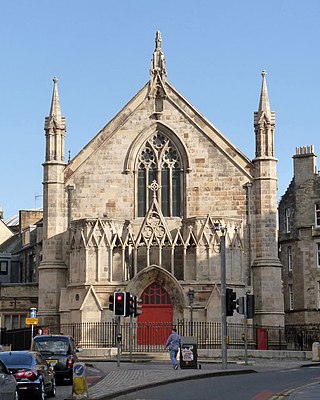
Bedlam Theatre is a theatre in the Old Town of Edinburgh, Scotland. The building was completed in 1848 for the New North Free Church. After closing as a church in 1941, the building served as a chaplaincy centre and then a store for the University of Edinburgh before reopening in 1980 as the student-run theatre of Edinburgh University Theatre Company (EUTC).
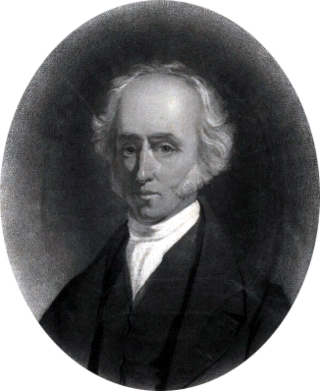
Robert Gordon FRSE was a Scottish minister and author. Originally prominent in the Church of Scotland, and serving as Moderator of the General Assembly in 1841, following the Disruption of 1843 he joined the Free Church of Scotland and became a prominent figure in that church.

The Queen's Hall is a performance venue in the Southside, Edinburgh, Scotland. The building opened in 1824 as Hope Park Chapel and reopened as the Queen's Hall in 1979.
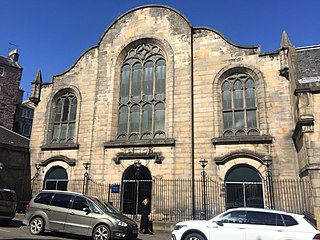
Lady Yester's Kirk was a parish church of the Church of Scotland and one of the burgh churches of Edinburgh. Founded in 1647, it served the south-eastern part of Edinburgh's Old Town until its union with Greyfriars Kirk in 1938.
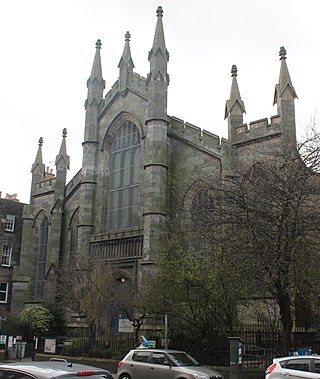
The Southside Community Centre is a community centre in the Southside, Edinburgh, Scotland, United Kingdom. The centre opened in 1986 and occupies the former Nicolson Street Church, which was completed in 1820.
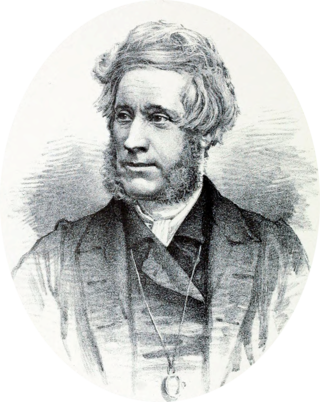
William King Tweedie (1803–1863) was an historian, biographer and a minister of the Free Church of Scotland Tolbooth Church, Edinburgh.

James Julius Wood (1800–1877) was a 19th-century Scottish minister who served as Moderator of the General Assembly of the Free Church of Scotland 1857/8.

James Chalmers Burns was a Scottish minister, who served as Moderator of the General Assembly for the Free Church of Scotland 1879/80.
William Nixon (1803–1900) was a Scottish minister of the Free Church of Scotland who served as Moderator of the General Assembly in 1868/69. In Montrose he was nicknamed the "Lion of St John's".

St Andrew's Orthodox Church is an Orthodox church located in the Southside, Edinburgh, Scotland. Edinburgh’s Orthodox community was founded in 1948 and has, since 2013, occupied the former Buccleuch Parish Church, which was founded as a chapel of ease of St Cuthbert's in 1756 and closed in 1969.

Bristo Church was a Presbyterian church located in the Bristo area of Edinburgh, Scotland. Founded in 1741 as a Secession church, it reunited with the Church of Scotland in 1929 before being dissolved in 1937. The University of Edinburgh afterwards used the building as the Pollock Memorial Hall until its demolition in 1967.

The King's Hall is a church in Newington, Edinburgh, Scotland. Constructed as Newington Free Church in 1843, it is now used by Community Church Edinburgh: an independent evangelical congregation.

Life Church is a congregation of the Apostolic Church located in the Southside, Edinburgh, Scotland. The church's building was constructed for a congregation of Auld Licht Anti-Burghers in 1813.

West St Giles' Parish Church was a parish church of the Church of Scotland and a burgh church of Edinburgh, Scotland. Occupying the Haddo's Hole division of St Giles' from 1699, the church was then based in Marchmont between 1883 and its closure in 1972.

Pleasance Church was a Presbyterian church on the Pleasance in the Southside of Edinburgh, Scotland. Originating in the Relief Church in the 1820s, the congregation united with Charteris Memorial in 1953.
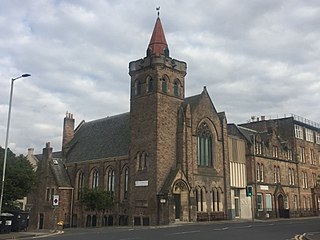
The Greyfriars Charteris Centre is a community centre in the Southside, Edinburgh, Scotland, part of the mission of Greyfriars Kirk. The centre opened in 2016 and occupies the 20th century church buildings which became Kirk o' Field Parish Church in 1969.

The Highland Church was a Gaelic-speaking congregation of the Church of Scotland, based in Tollcross, Edinburgh. Formed by the union of St Oran's Church and St Columba's Gaelic Church in 1948, the congregation continued united with Tolbooth St John's in 1956.

The New College Settlement was a student settlement based on the Pleasance in the Southside of Edinburgh, Scotland. Founded by students of New College in 1893, its work continued until 1952.
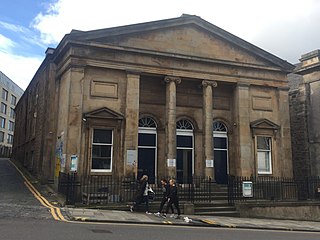
St Oran's Church was a Gaelic-speaking congregation of the Church of Scotland in Edinburgh. Originating in the early 18th-century, the congregation continued until 1948, latterly meeting at Broughton Street.






















